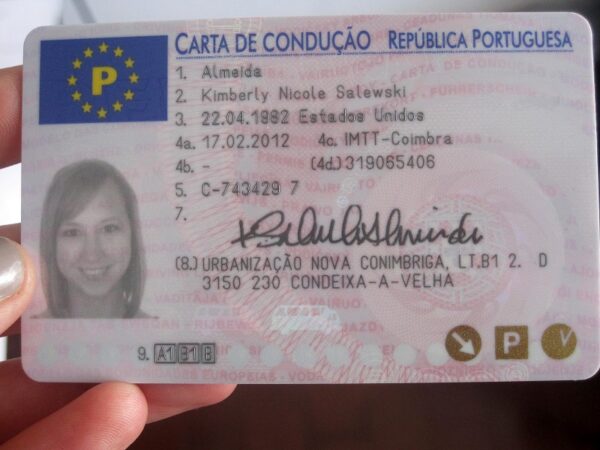Understanding Driving License Legislation: An In-Depth Exploration
Driving is an important part of modern life, offering mobility and self-reliance to people around the world. Nevertheless, getting a driving license is not simply a matter of passing a test; it needs understanding a wide range of legislation and regulations. This short article dives into the different elements of driving license legislation, exploring its history, current laws, and their ramifications for drivers.
Historic Context of Driving License Legislation
The roots of driving license legislation can be traced back to the early 20th century when the number of lorries on the roadway started to increase considerably. The intro of the car raised issues about safety, liability, and ecological effect. As a response, governments all over the world began executing regulations governing motorists and lorries.
Key Milestones in Driving License Legislation:
- Early 1900s: The very first driving licenses appeared, often requiring chauffeurs to pass a basic assessment.
- 1920s: Many Western countries began formalizing their licensing processes, consisting of age constraints and knowledge tests.
- 1950s-60s: The application of road safety campaigns highlighted the significance of driving education.
- 1980s: Introduction of automated testing and digital licensing to enhance availability and effectiveness.
- 2000s-Present: Ongoing reforms addressing problems such as road safety, impaired driving, and the integration of digital recognition innovations.
The Structure of Driving License Legislation
Driving license legislation is diverse, incorporating a variety of guidelines that govern the issuance, validity, and enforcement of driving licenses. The following table describes the essential components of driving license laws:
| Component | Description |
|---|---|
| Eligibility | Minimum age, residency requirements, and resident status. |
| Checking Requirements | Understanding tests, practical driving tests, and vision screening. |
| Licensing Types | Various classes for numerous vehicle types (e.g., motorbikes, trucks). |
| Renewal and Expiration | Regulations on license renewal frequency and expiration dates. |
| Penalties | Fines, demerit points, and suspension for infractions. |
Kinds Of Driving Licenses
Driving licenses are classified based upon the kind of automobile the holder is allowed to run. Comprehending these categories is crucial for compliance with the law.
Common Types of Driving Licenses:
- Class A: Required for operating heavy trucks and vehicles over a specific weight.
- Class B: For bigger passenger cars, such as buses and vans.
- Class C: Standard licenses for individual automobiles.
- Class M: Motorcycles, requiring specialized testing.
- Student's Permit: Allows people to practice driving under guidance.
Current Trends in Driving License Legislation
As society develops, so do the laws governing driving licenses. Recent patterns and changes in legislation show developments in technology and shifts in public attitudes towards movement and safety.
Secret Trends:
- Digital Licenses: With the increase of digital innovation, many jurisdictions are moving towards the adoption of digital driving licenses that can be stored on smartphones.
- Automatic Renewals: Some regions now allow for automatic license renewals based on electronic records, decreasing the requirement for in-person check outs.
- Increased Focus on Safety: Many countries are tightening regulations associated with impaired driving, distracted driving, and road safety to fight increasing accident rates.
- Ecologically Friendly Policies: With growing concerns over environment change, some places have introduced rewards for electric automobile ownership, affecting driving license categories.
FAQs About Driving License Legislation
What is the minimum age to get a driving license?
- The minimum age differs by jurisdiction however generally varies from 16 to 18 years.
What documents are required to make an application for a driving license?
- Typical requirements consist of evidence of identity, residency, and, in many cases, completion of a chauffeur's education course.
What takes place if a driving license is ended?
- Driving with an expired license can lead to fines, and the individual may require to retake tests depending on the length of time the license has actually been expired.
Can a driving license be withdrawed?
- Yes, licenses can be revoked for severe offenses such as repeated DUI offenses, careless driving, or collecting too many demerit points.
Exist driving licenses for electrical lorries?
- While electric cars do not need a specific license type, operators need to hold a basic driving license suitable for their vehicle class.
Driving license legislation plays an important function in keeping road safety and controling automobile operation around the world. With the ongoing evolution of technology and social standards, understanding the existing trends and regulations surrounding driving licenses remains essential for aspiring and existing drivers. Keeping abreast of cartãoexpressodeportugal.com makes sure compliance and contributes to safer travel for everybody on the roadway.
By acknowledging the value of driving license legislation, people can browse the streets with self-confidence, contributing to a culture of accountable driving and public safety. As laws continue to adjust, remaining informed empowers drivers to make informed decisions about their transportation requires.

